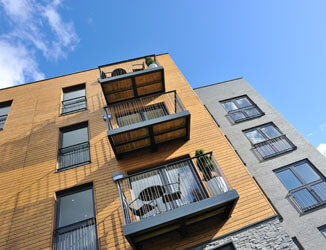It is critical for developers to consider at an early stage of any development how utilities will service their site. Despite sites often having the benefit of apparently extensive easements to cater for the laying of service media, there can be some unpleasant surprises when dealing with utility providers.
Two scenarios are relatively commonplace:-
- A site has the benefit of rights over neighbouring land in third party ownership to install, connect to and maintain services over and through that neighbouring land; and
- A developer owns the land it needs to service the site, but its ownership is under a lease. Such leases would typically include rights for the developer, as leaseholder, to install and maintain service media.
However, whilst those rights might be drafted comprehensively and appear sufficient for the purposes of developing the site in question, many utility providers are reluctant to shelter solely under the rights granted to other landowners. The result is that when a developer comes to put in place its agreements with utility providers, they may struggle to get a utility provider to sign up without the neighbouring landowner (taking scenario one above) or the freeholder (taking scenario 2 above) joining in to a new deed of easement directly in favour of the utility provider. If the developer cannot compel their neighbour or freeholder to enter such a deed, it can cause delays and may create a ransom.
Most utility providers will not accept sheltering under rights granted to others. Utility providers will wish to freely access their cables/pipes and receive assurances that they will not be damaged. They are likely to have additional requirements for restrictive covenants which protect their equipment, such as preventing trees being planted nearby, or for works to be carried out which interfere with their equipment or make it less easy to access. The utility provider is also likely to want a direct remedy against the neighbour or freeholder if its cables/pipes were to be damaged. Sheltering under the developer’s rights would often not provide for this.
The utility provider will therefore usually require a formal easement which can be registered at the Land Registry and which binds the land in perpetuity. In this eventuality, it is usual for the developer to cover the utility provider’s surveyor costs and legal fees as well as the fees of any third party having to enter the deed at the developer’s request.
In the less likely scenario that the utility company is willing to shelter under the rights held by the developer, some risks remain for the developer, particularly in relation to subsequent disputes over actions that the utility provider takes to maintain its cables and pipes. It leaves the developer acting as middle man for any future dispute between the neighbour or freeholder and the utility company.
What if the neighbour or freeholder refuses to enter into a deed of easement with the utility provider? If there is no requirement contained within the relevant transfer or lease, there are limited options. One possibility may be for the utility company to apply to the Secretary Of State for a compulsory wayleave but this is not always available and, in any event, may require the payment of compensation and will no doubt cause delay. When negotiating service rights granted in a transfer of land or contained within a lease, consideration should be paid to whether the neighbouring owner or landlord should also be subject to an obligation to enter into a future deed of easement with a utility provider on request.
In conclusion, plenty of time should be afforded to resolve any access rights over surrounding land and avoid problems and delays further down the line. Or, in other words, prior planning prevents perilous piping!



